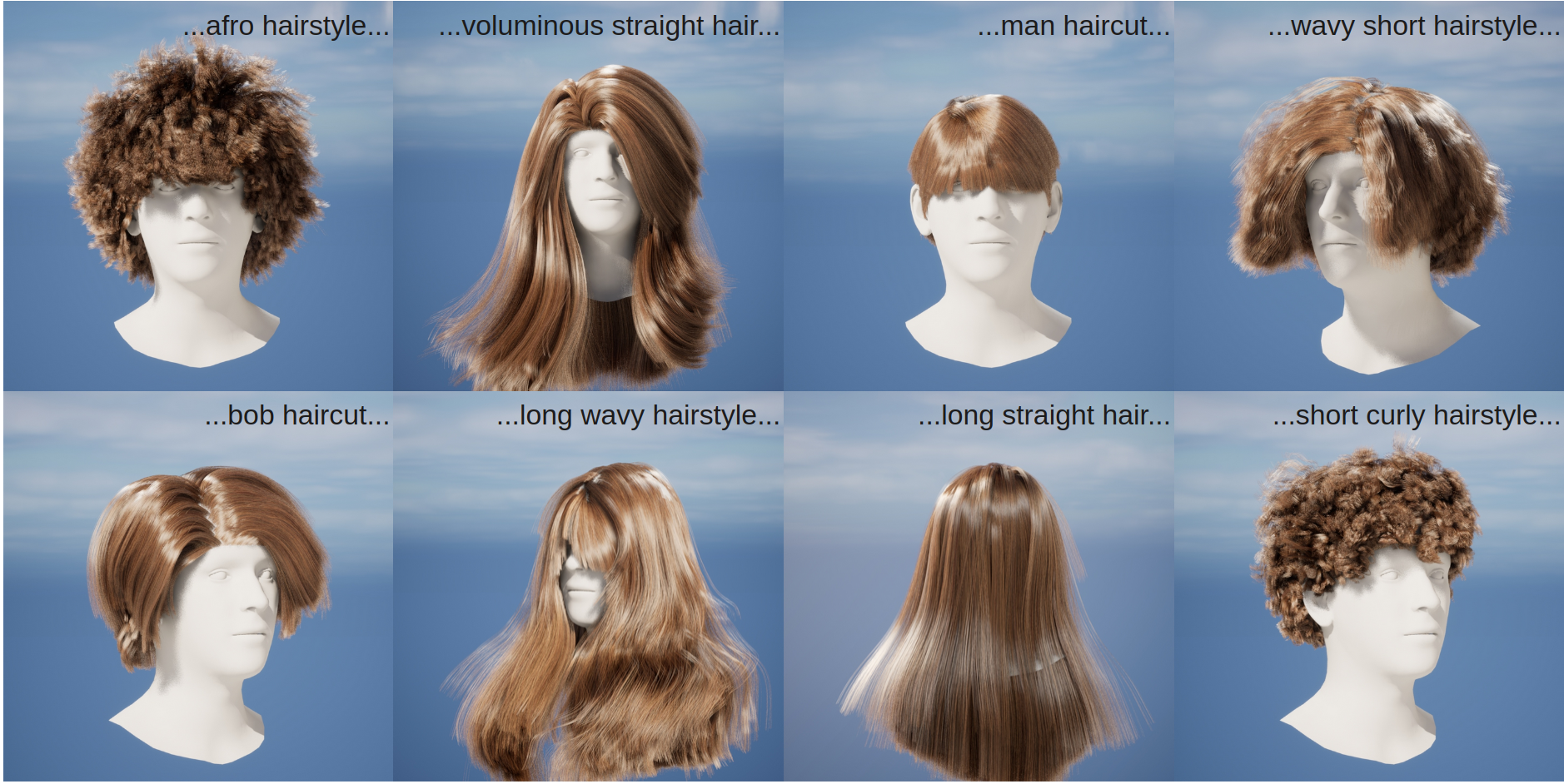Human Pose, Shape and Action
3D Pose from Images
2D Pose from Images
Beyond Motion Capture
Action and Behavior
Body Perception
Body Applications
Pose and Motion Priors
Clothing Models (2011-2015)
Reflectance Filtering
Learning on Manifolds
Markerless Animal Motion Capture
Multi-Camera Capture
2D Pose from Optical Flow
Body Perception
Neural Prosthetics and Decoding
Part-based Body Models
Intrinsic Depth
Lie Bodies
Layers, Time and Segmentation
Understanding Action Recognition (JHMDB)
Intrinsic Video
Intrinsic Images
Action Recognition with Tracking
Neural Control of Grasping
Flowing Puppets
Faces
Deformable Structures
Model-based Anthropometry
Modeling 3D Human Breathing
Optical flow in the LGN
FlowCap
Smooth Loops from Unconstrained Video
PCA Flow
Efficient and Scalable Inference
Motion Blur in Layers
Facade Segmentation
Smooth Metric Learning
Robust PCA
3D Recognition
Object Detection
HAAR: Text-Conditioned Generative Model of 3D Strand-based Human Hairstyles

We present HAAR, a new strand-based generative model for 3D human hairstyles. Specifically, based on textual inputs, HAAR produces 3D hairstyles that are ready to be used as assets in various computer graphics animation applications. Current AI-based generative models take advantage of powerful 2D priors to reconstruct 3D content in the form of point clouds, meshes, or volumetric functions. However, by using the 2D priors, they are intrinsically limited to only recovering the visual parts. Highly occluded hair structures can not be reconstructed with those methods, and they only model the outer shell, which is not ready to be used in the physics-based rendering of simulation pipelines. In contrast, we propose a first text-guided generative method that uses 3D hair strands as an underlying representation. Leveraging 2D visual question-answering (VQA) systems, we automatically annotate synthetic hair models that are generated from a small set of artist-created hairstyles. This allows us to train a latent diffusion model that operates in a common hairstyle UV space. In qualitative and quantitative studies, we demonstrate the capabilities of the proposed model and compare it to existing hairstyle generation approaches.
Publications